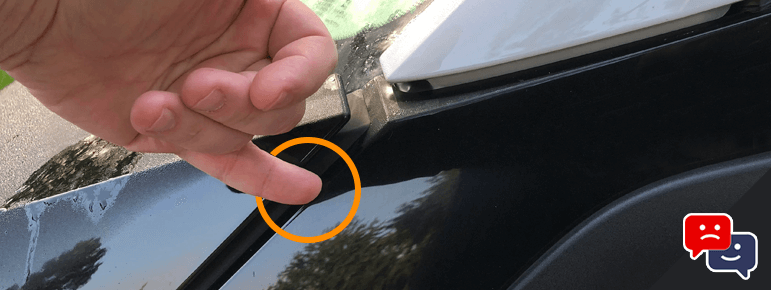The body of a car is its structure, the frame of thin sheet metal that covers and protects the internal components. But, what are body gaps on a car, and why do they matter?
Body gaps are small spaces in between car panels. When car panels are improperly installed or dented, can detrimentally affect the aesthetic of the vehicle. Large body gaps can also impact regular functions like closing the door or trunk.
Do you find yourself wondering what all the terminology is when you’re looking at cars? One term that stands out as confusing to many car shoppers is “body gap.”
If this sounds like something out of a manufacturing textbook, don’t worry – it’s actually a rather simple concept.
In this blog post, we’ll teach you exactly what body gaps are. Then we will get into why they matter when buying a quality car.
So if you’re curious about body gaps and why quality-checking them matters during your next vehicle purchase, keep reading!
Why Do Body Gaps Matter?
Body gaps, or panel gaps in a car are the small sections in between panels. As insignificant as they may seem, body gaps should be perfectly aligned.
If there are large gaps between the panels of a vehicle, it could mean the overall build quality is low. Or worst, body gaps could indicate a previous accident repair.
So if you’re looking at purchasing a new or preowned car, large or misaligned body gaps isn’t a good sign. In fact, it should make you think twice about opting for such a model.
As an example, a car accident can significantly misalign the body gaps. Large gaps around a section of a car may also be an indicator of frame damage.
And it’s true, over time a car’s doors, hood, and trunk panels may gradually shift. Especially as the vehicle begins to age. But in reality, this movement is very minor.
What Are The Effects of Misaligned Body or Panel Gaps?
Some car owners run into a pesky hood or trunk misalignment that prevents them from closing properly. Worn door hinges may begin to fail, allowing the doors to sag. Ultimately leading to problems closing and opening the door.
While minor adjustments can be made using simple hand tools, it’s typically something best left for the autobody shop.
If the vehicle has had paint protection film applied, you may notice an uneven body gap between the bumpers and fenders. If you suspect this to be the case, verify with the owner that the car has had this protective treatment applied.
Body Gaps and Used Cars
Buying a used car can save you a lot of money. But you’d be surprised just how much information you can learn about a car’s history by its body gaps.
The last thing you want is to buy a used car only to realize later that the body gaps are completely misaligned.
Not only does such a sight look awful, but it could indicate that the vehicle has been reassembled at some point.
Of course, that might not be a deal breaker for you, but it’s certainly a point of conversation that you should bring up with the owner.
What Are Body Gaps on a Car FAQs
How Big Should Panel Gaps Be?
No matter the vehicle — luxury cars, trucks, SUV’s — most aim for a 4mm gap consistently. Of course, it can be less for luxury cars right, down to the millimeter. And more than 4mm on vehicles built for strength and practicality.
Do All Cars Have Body or Panel Gaps?
It’s something that every car has: body or panel gaps. There are many places where body gaps will occur, between the fender and front door, to the back window and bumper.
You may even experience it inside, too — between dash parts as an example.
How do I Fix Car Panel Gaps?
One of the most common issues contributing to panel gaps can be traced back to your door’s hinges. To fix this, you’ll have to reposition the door hinge to get the gap just right.
Final Thoughts
In conclusion, pay attention to the body gaps when inspecting a car. If they’re large or misaligned, it could be indicative of a lower build quality or previous accident damage.
So when you’re shopping for a new or pre-owned car, be sure to inspect the body gaps. If they’re not up to par, it’s probably best to keep looking.

Managing Editor
Christopher is an automotive technical writer. When he’s not at the local autocross event, he can often be found working on one of his cars. Specializes in automotive class action law, industry trends, and automotive maintenance. Email me direct, or learn more about us

